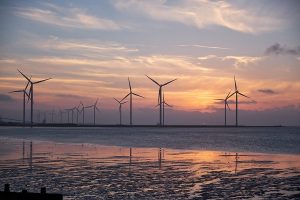Keen readers of the news will have seen the exciting reveal of the Dominican Republic’s 48mW wind farm in early December. An indicator of the vast development occurring across central America and the Caribbean, it offers a taste of the priorities of national governments – primarily, driving tourism profits into new infrastructure for their citizens. Most positively, much of this is being done through green energy and measures, meaning that progress is good for both the economy and the natural world.
Green inspiration for the region
The primary goal of much of this restoration is the continued improvement of the wider region. The Caribbean has been dominated by low employment, and the OECS estimate that 25% of young Caribbean people remain unemployed even today. The construction of new industry that is sustainable and has a place in the modern world, is considered a driver of employment and improved prospects internationally. This includes through construction, such as the wind turbines and their infrastructure; through maintenance, on an aerial work platform designed to upkeep new facilities; and through the invigoration of local areas that putting money into the system generates.
Carving a place in the world
Tourism aside, the Caribbean has been snubbed for many major new construction projects and infrastructure considerations. Belize is one of many examples that is turning this perception around. According to the Vancouver University Press, significant green heavy industry has been created in Belize, supported by funds to the tune of $875,000. Particularly focused on were coastal areas, with a focus on constructing flood defences and showing construction and manufacturing business in those regions how to deal with the potential onset of climate change-related effects. Through this, the Caribbean has shown how relevant it is and will continue to be in the post-climate change world.
Future challenges
Some of the biggest economies in the Caribbean continue to rely on dirty industries. Trinidad and Tobago, ranked as a high wealth country, relies on its hydrocarbon industry to fuel its social and economic changes in the country. Even as it starts to transition towards different areas – the Trinidad Express note an increase in ammonia production – the industries are not necessarily green. Elsewhere, Guyana has started to rapidly increase the exports of oil it produces in order to fund its own economy. These funds are sorely needed to create social change in many Caribbean nations, and so it would be unfair to expect them to not take advantage of their natural resources; however, with the threat of climate change looming, continued inspiration and education from neighboring countries and islands will be important to maintain real change.
The Caribbean is more vulnerable than most to the effects of climate change. Just a few degrees of change could spell disaster for the many and varied island nations that make up that region of the world. Clearly, countries are responding, with heavy industry turning to real, green change, through renewable energy and climate-positive acts. Working together to eschew the fossil fuel industry will be that final step, and it can’t come soon enough.


